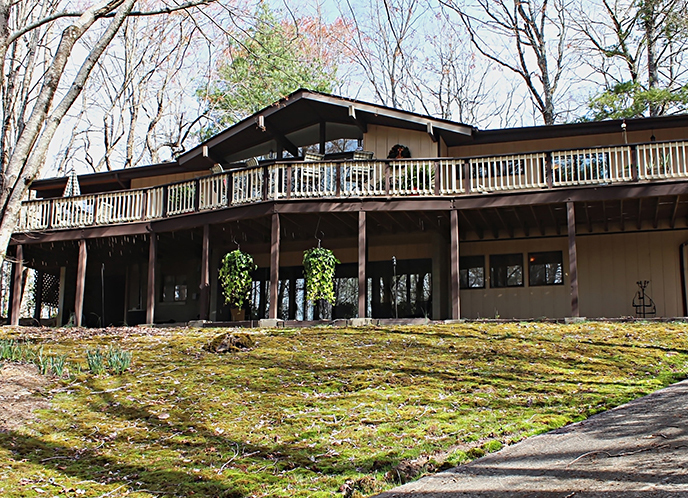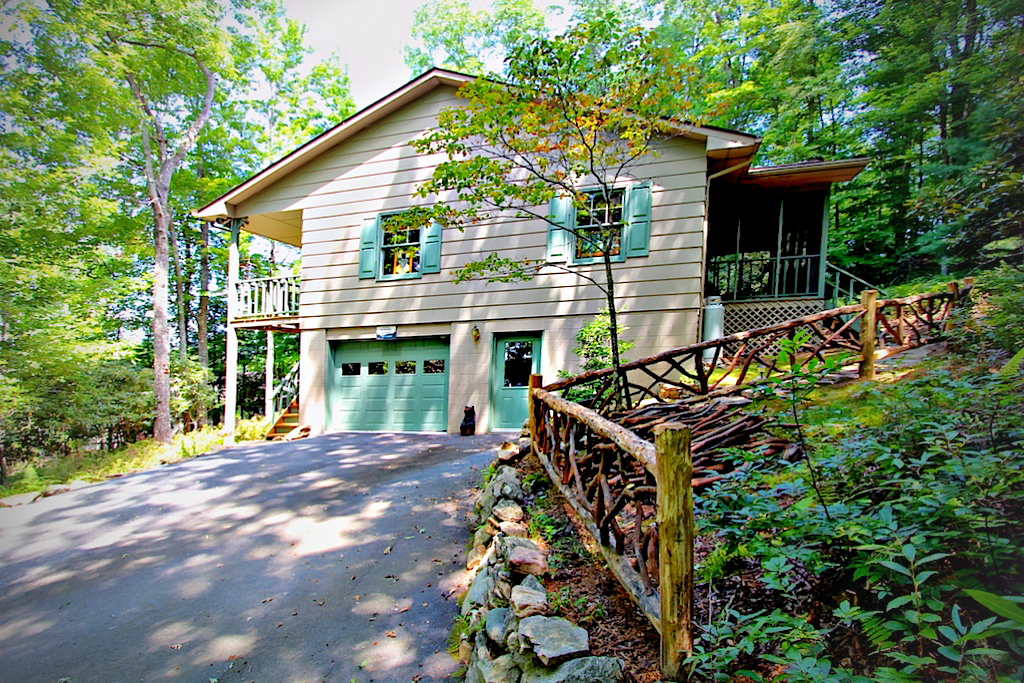From time to time, we will post current homes for sale that we deem bargains in golf communities we have visited. The following are courtesy of the Clay Team, Bob and Carol Clay, whom we work with in the mountains of western North Carolina. If you are interested in either of these properties or in learning about others in the 3,900-acre Connestee Falls and other fine golf communities in the Brevard, NC, area, please contact me for an introduction to Bob and Carol.
The golf course at Connestee Falls, designed by George Cobb who designed the par 3 course at Augusta National, winds its way through tall pine forestation that is ubiquitous throughout the mountain regions of North Carolina. If you like doglegs and playing the slopes of fairways and greens, Connestee will be to your liking. Besides golf, the community features hiking trails, tennis and four lakes. The nearby Davidson River was recently celebrated in Garden & Gun magazine as one of the best waterways in the South, especially for its population of large rainbow trout. The charming town of Brevard is a mere six miles from Connestee’s front gate, and the prices for homes currently listed in the community (see below) will appeal to second-home buyers (especially those from Florida seeking to flee summer heat) and retirees from everywhere who appreciate the arts and crafts ethic of small-town mountain living. For my review of Connestee Falls after I visited in 2008, please click here.
Overall, homes in Connestee Falls range in price from the mid $100s to just under $1 million. Two current properties for sale in Connestee Falls seem like especially good buys. One highlights outdoor living with wide, open decks for appreciation of forest and mountain views and a patio with a gas-fired pit. The 3,100 square feet inside contains three bedrooms, two and half baths and two fireplaces. The owners recently refurbished much of the home, with a coat of fresh paint, new carpet, new plumbing and other touches. The home is listed at just $259,000, which works out to an impressive $84 per square foot. Plenty of nice views from this Connestee Falls home. Priced at $259,000.
Plenty of nice views from this Connestee Falls home. Priced at $259,000.
The other home the Clay Team is featuring is smaller but less expensive overall. It also features three bedrooms and two and a half baths but encompasses just under 2,000 square feet. It has been remodeled to include new hardwood floors, repainting and an updated kitchen. What has not changed are the year-round mountain views. The home is priced at just $250,000. At 2,000 square feet, this home is more than manageable for a couple who would prefer spending time on the golf course or just sitting on the deck looking out at the mountains.
At 2,000 square feet, this home is more than manageable for a couple who would prefer spending time on the golf course or just sitting on the deck looking out at the mountains.























